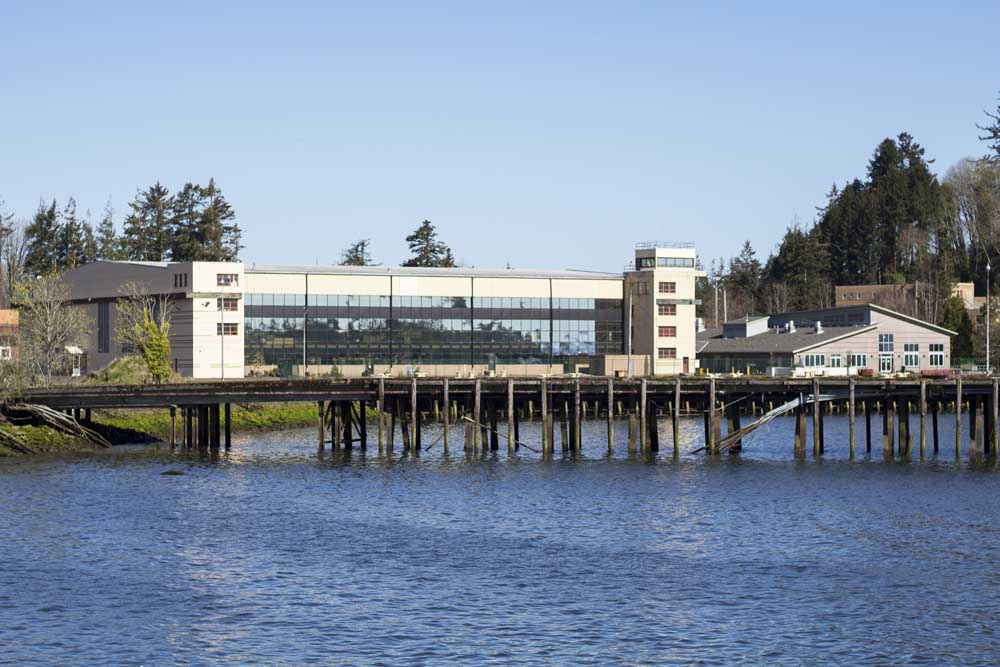George Fulton lets his roots spread out on an Astoria hilltop
Published 5:00 pm Sunday, March 22, 2009
From the picture window of his hilltop home, third-generation Astorian George Fulton has an expansive view of the Columbia River, where he did horse-seining for salmon as a teenager in the 1930s. “We used to tell visitors the horses could walk on water,” he said, laughing at the memory.
Fulton, a retired lawyer, had his house built 47 years ago on property he bought from the city. Carl Utzinger leveled the lot, Roy Duoos was the contractor and John Rickenbach built it. “When I moved here I could jump over those trees,” Fulton said, pointing to couple of towering spruces on a neighbor’s property that take a bite out of his view.
This house is where he and his late wife, Louise, known as Sus, raised their children, Steve and Sarah. Louise Dahl was his high school sweetheart, and they married while Fulton was still in law school. “I had a great family. I hope my kids think we were as good to them as my parents were to us,” he said. Fulton’s sister, Nancy Lowell, died recently.
As a child growing up in Astoria, Fulton and his friends often played in the tunnels under the city, entering at a burned out spot between the Elks Club building and the American Legion. He would also go to the YMCA, he said, and there was a janitor at the old Lewis and Clark Elementary School, at Eighth and Irving, who would let kids in to play basketball. He attended that school for awhile and his aunt was his first-grade teacher. “She flunked me,” he said, still looking surprised.
Fulton later went to Shively Elementary, which was located at 16th and Exchange streets, the site of Lum’s Auto until recently. Every summer during high school, when he wasn’t on the seining grounds, Fulton’s job was to take dozens of legal tomes off the shelves at the elder Fultons’ law office, dust them off, vacuum the shelves and put the books back.
Fulton seemed destined to be a lawyer like his father, Allen “Dick” Fulton, and grandfather, George Clyde Fulton, but World War II intervened while Fulton, a 1938 graduate of Astoria High School, was a student at the University of Oregon. Not wanting to be drafted, he enlisted in the U.S. Navy and spent three years and nine months as a sailor.
The Navy was “the big thing in my life,” said Fulton, who was a “fire control man” aboard two destroyers. “I pulled the trigger that set off the five-inch gun,” he said. He survived the battles of Midway, Guadalcanal and Savo Island – the worst defeat in U.S. history, he said – and various other battles in the South Pacific. Twelve men were lost in one of the battles and 20 were badly injured, but he was never wounded. Fulton proudly displays a letter of commendation from Secretary of the Navy, James Forrestal, dated Oct. 31, 1945.
After his service in the Navy, Fulton returned to Astoria and went into the silver-plating business with a friend, John Cederberg, but it didn’t work out. Then he went to work for a laboratory analyzing shark livers for their Vitamin A, which was extracted and sold to make vitamin pills. The discovery of synthetic Vitamin A ended that job.
Luckily, Fulton was already taking classes at night at Northwest College of Law, commuting to Portland two weeknights and every Saturday for three years. During that time he also worked as a claims adjuster for an insurance company, which gave him valuable experience.
“Thanks to the Navy, the U.S. government paid for my education,” he said. He got his degree, passed the bar exam, joined his father’s law firm and began his long and successful law career.
“It was fun,” he said. He enjoyed practicing in a small town, where lawyers handle all kinds of legal work. A case that sticks in Fulton’s mind involved defending a man who got drunk and killed his wife. “He was found guilty but they didn’t hang him,” he said. Fulton also did some municipal law, was the municipal judge for a while, represented five water districts and Clatsop Community College and was the longtime attorney for the Port of Astoria, where he remembers preparing the sale of bonds that the Port issued for Crown Zellerbach to build a filter system at Wauna Mill. He was also a director for the Bank of Astoria.
“I can’t believe I’m 90 years old. I still have my hair and my teeth, but I can’t do the things I did when I was 21,” said Fulton, who descends from sturdy pioneer stock. His maternal grandmother’s father walked across the plains to Oregon twice. During the first trek, his wife died, so he went back to England and got another wife. Fulton’s paternal grandfather was from Liverpool. He came to Astoria by way of Canada and was a partner in Astoria Iron Works, which was located at the Port of Astoria.
Fulton no longer goes hunting and fishing, but he’s
– Sandra Swain





